
Addressing Biodiversity
The Futaba Group recognizes that it utilizes natural capital─including water resources─in its business activities, and that it also has an impact on the natural environment. Going forward, we will bolster our natural capital-related initiatives not only in the area of the atmosphere (reducing CO2 emissions), but also with regard to water quality and soil, as well as biodiversity, and we will consider taking action with a view to being nature positive.
With the publishing of the final version of the TNFD*1 framework in 2023, the Futaba Group quickly went to work addressing the relationship between its business activities and natural capital, identifying risks and considering initiatives. In parallel with this, we are preparing for the disclosure of information, and going forward, we will continue to expand disclosure content.
Moreover, we will focus not only on mitigating our environmental impact, but on the use of resources in our business activities in an efficient and cyclical manner. We accept the challenge of achieving a circular economy.
*1 TNFD: Taskforce on Nature-related Financial Disclosures
Governance
Futaba reports and supervises its management approach to climate change and the risks and opportunities associated with its business at our Sustainability Promotion Committee.
As one of the Company's priority issues (materiality), environmental issues including climate change are incorporated into the medium-term management plan and corporate global policy after approval by the Board of Directors, and the Company is working to achieve its goals.
The Carbon Neutrality Project Committee deliberates and establishes the Futaba Group's policies and targets, and each responsible department formulates action plans, deploys them to the Futaba Group, and manages their progress globally. In addition, we have expanded this to our suppliers in Japan, and are promoting measures throughout the supply chain. Progress is reported to the Sustainability Promotion Committee, while improvement activities and the reexamination of targets based on changes in the business environment and business performance are discussed by the CN Project Secretariat and each responsible department, and are reflected in the policies and targets.
We address and manage natural capital and biodiversity within the framework of our sustainability promotion structure. Additionally, we regularly review and discuss identified risks and opportunities, and the progress of indicators and objectives in the Carbon Neutrality Project Committee.
Promotion system chart
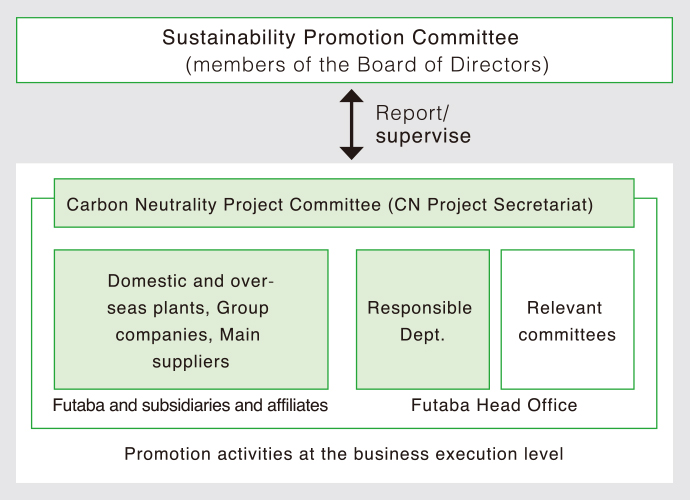
Strategy (risk and opportunity)
We have mapped out the relationship between the Futaba Group's business activities and natural capital, and organized the dependencies and impacts. We regard the use of water and energy resources and emissions into the atmosphere, soil, and water as risks related to our business activities.
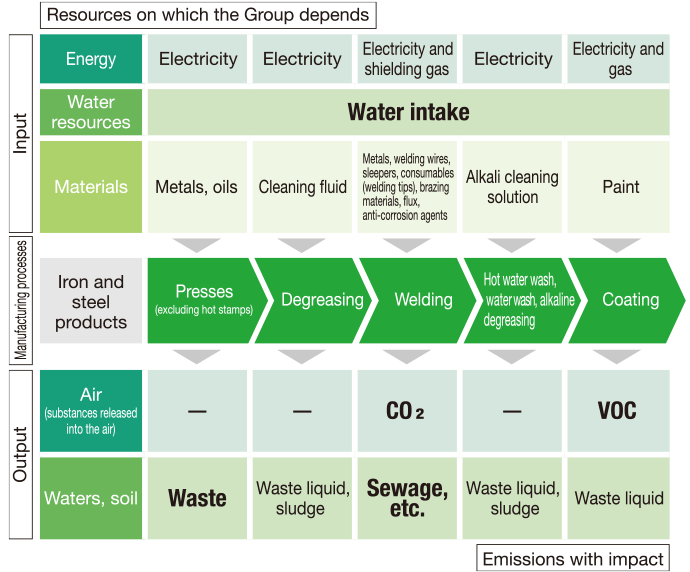
Management of risk and impact
We identify risks using assessment tools such as Aqueduct.*2 The risks identified are discussed by the Carbon Neutrality Project Committee. The targets set for each natural capital are managed as part of the materiality of the SDGs.
*2 Aqueduct: An analytical tool used for evaluating water stress and risk of depletion in various regions
| Category | Risks and opportunities | Futaba's measures |
|---|---|---|
| Physical risks | Flooding of plants due to natural disasters such as heavy rains and tsunamis, suspension of production activities due to the interruption of distribution lines, and an increase in restoration costs | Strengthening the BCP system |
| Transition risks | Reduction in production due to water intake restrictions during periods of low rainfall and drought | Minimizing water usage through water intake reduction activities |
| Halted production activities and penalties due to water, soil, and air pollution |
|
|
| Accountability of waste discharge operators due to illegal dumping by waste disposal contractors |
|
|
| Opportunity | Increased revenue from the development and sale of environmentally friendly products |
|
Metrics and targets
To conserve natural capital on which we rely and which we impact, in addition to our previous carbon neutrality (reduction of CO2 emissions) initiatives, we will add new initiatives toward VOC*3, waste, and water resources (water intake), establish targets, and manage them on a global basis.
*3 VOC (Volatile Organic Compound): Hazardous substances that create photochemical oxidants and other substances, thereby causing health problems.
| Reduction item | Domestic target | Overseas target |
|---|---|---|
| VOC | Minimization | Minimization | Waste | -1%/year vs. FY2019 | -1%/year vs. FY2022 |
| Water resources (water intake) |
-0.5%/year vs. FY2020 | -0.5%/year vs. FY2022 |
| CO2 | -50% in FY2030 vs. FY2019 | |
Initiatives to reduce substances of concern
Futaba manages the volumes of use, transfer and emissions of environmentally hazardous substances that have adverse impacts on human health and the environment. We are promoting the reduction of environmental impacts by judging whether or not to purchase and use the chemical substances used in production processes by evaluating their environmental impact.
Quantities of PRTR substances released and transferred in FY2023
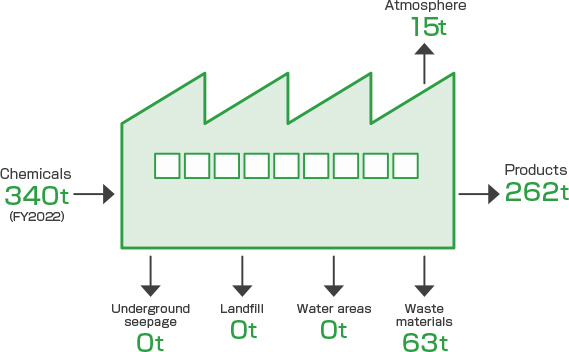
-
Quantities of PRTR*4 substances released
(Non-consolidated)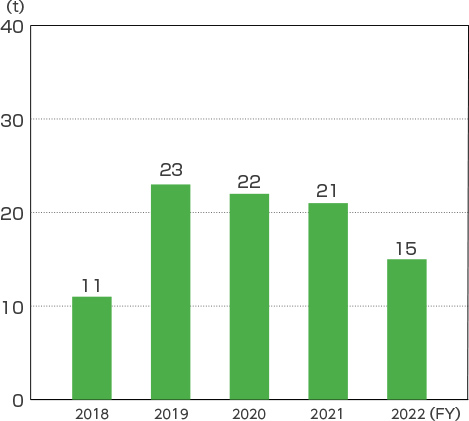
*4. PRTR (Pollutant Release and Transfer Register): A system whereby the release and transfer of chemicals suspected of being harmful is tracked quantitatively and registered.
-
VOC emissions(Non-consolidated)
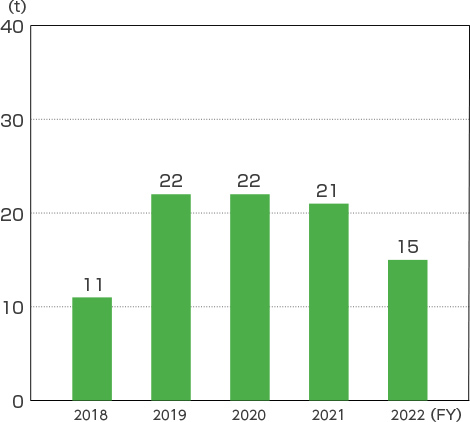
Handling of PCB equipment
The insulating oil in electrical equipment that is over 30 years old may contain PCBs (polychlorinated biphenyls). Due to their harmful nature, proper storage, reporting, and disposal of such equipment are required.
There is a legal deadline for disposal (March 31, 2027, for low-concentration PCBs), and we are working on measures such as updating equipment to ensure that disposal is completed by this deadline.

